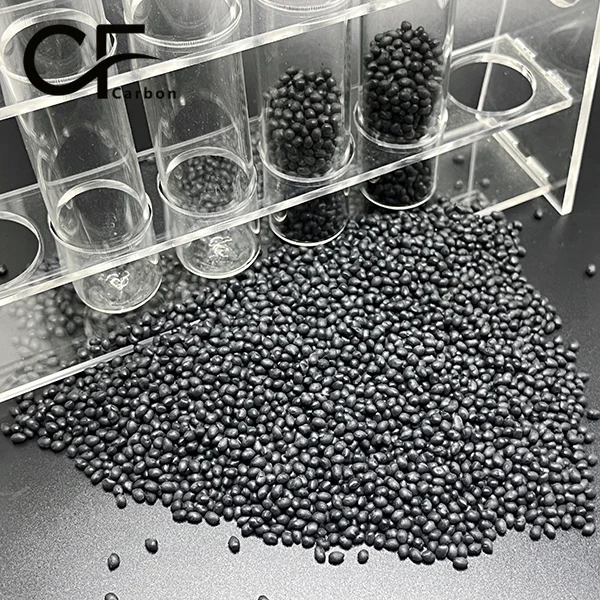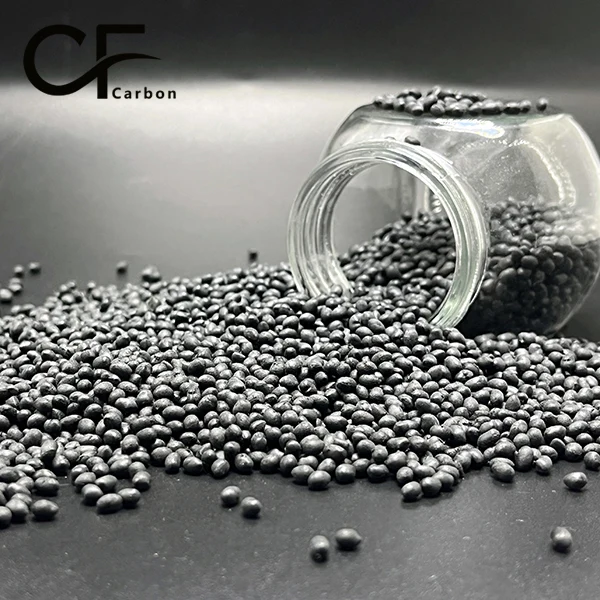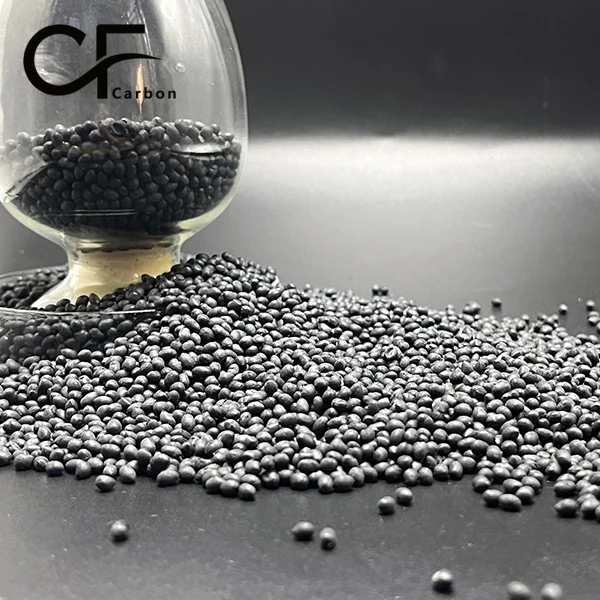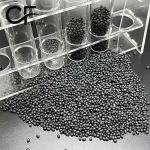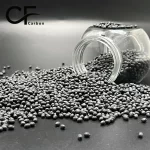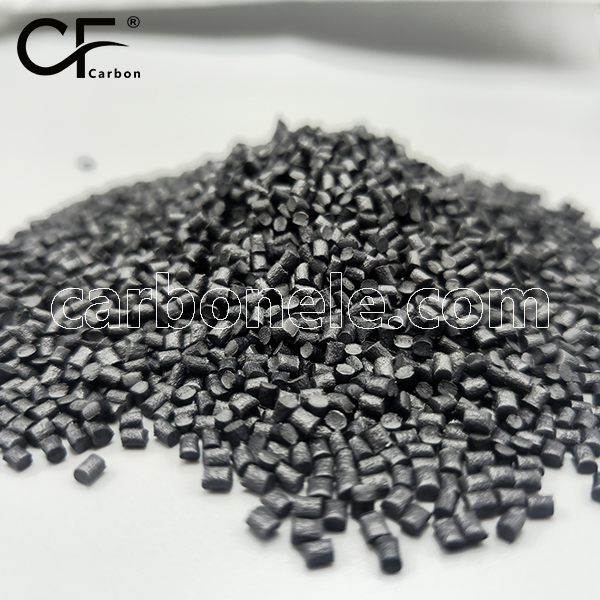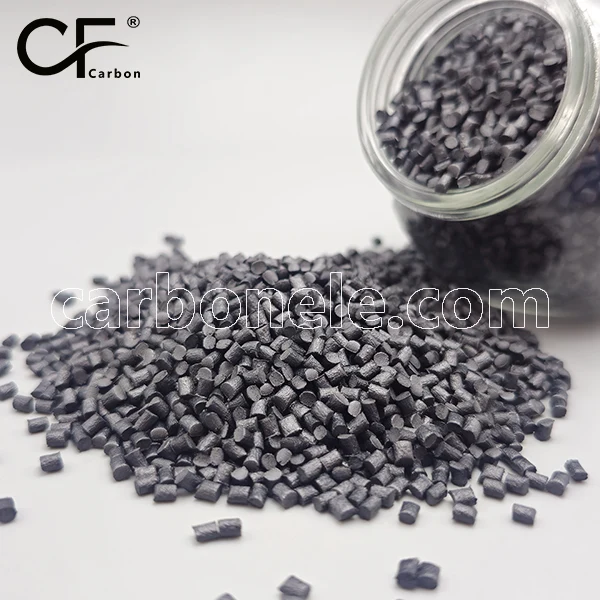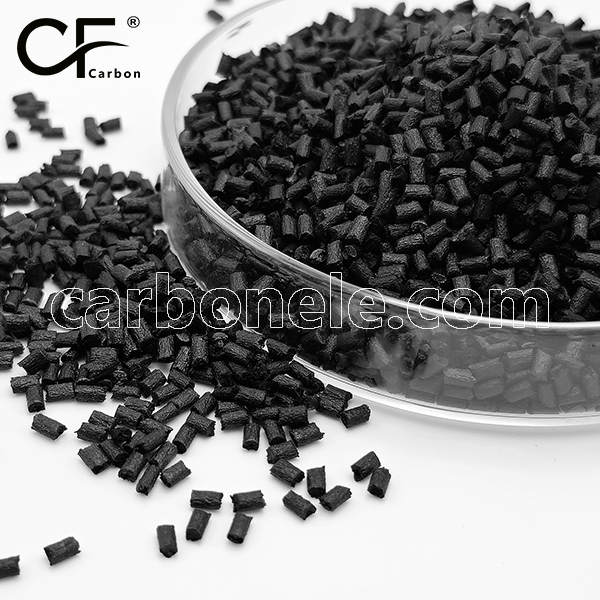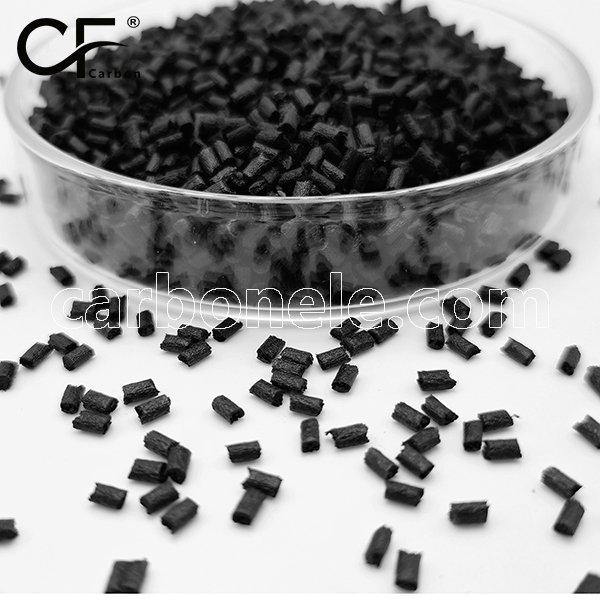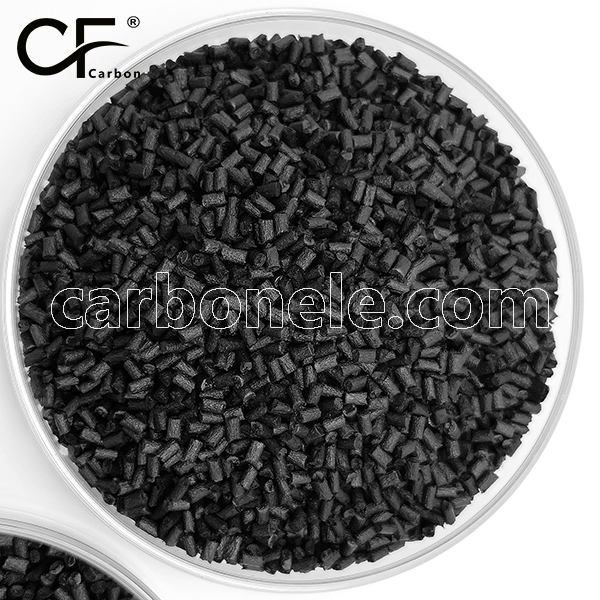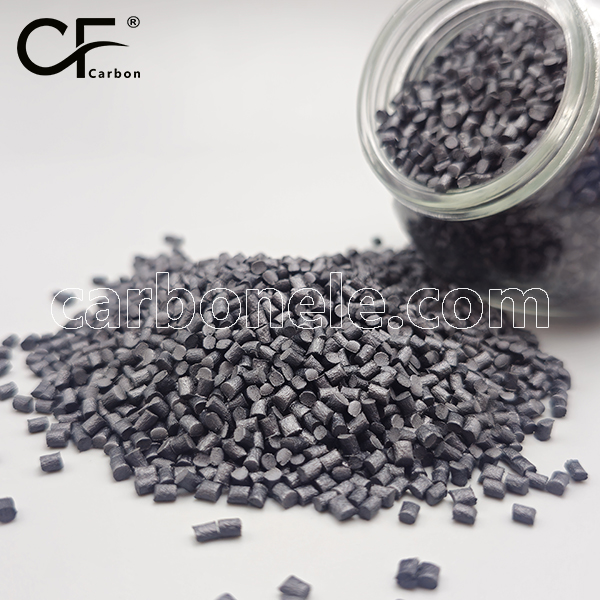
PETG Carbon 10% PETG CF10 Pellets for 3D Printer Filaments
1: Tensile strength reaches 56MPa, 42% higher than pure PETG
2: Flexural strength is 88MPa, 1.8x that of PETG Carbon base
3: Heat deflection temperature hits 82℃ under 1.82MPa load
4: Molding shrinkage rate is only 0.75%, lower than pure PETG
5: Unnotched Izod impact strength reaches 8.2kJ/m²
- Manufacturer: Carbon New Material
- OEM/ODM: Acceptable
- Color: Black
- Free samples: ≤10kg
- MOQ: 100kg
- Port: Xiamen
- Model: PETG-CF-BCA1
- Fillers: SCF
I. PETG CF10 Pellets Overview
PETG CF10 Pellets are composite pellets with PETG resin as the base material and 10% carbon fiber, specially developed for producing 3D Printer Filaments. The PETG Carbon base ensures the material has both toughness and processability, while the 10% carbon fiber significantly enhances mechanical properties. Their synergy makes PETG CF10 Pellets a high-quality raw material for 3D Printer Filaments. These pellets have uniform particle size and good carbon fiber dispersion, which can be stably extruded into 3D Printer Filaments after melting, avoiding filament breakage during printing. PETG CF10 Pellets also retain the environmental protection characteristics of PETG Carbon, meeting the standards of various industries, and are specialized pellets for 3D Printer Filaments that balance performance and practicality.
II. Key Material Properties (PETG CF10 Pellets)
1.
Tensile Strength
Printed parts made from 3D Printer Filaments produced with PETG CF10 Pellets have a tensile strength of 56MPa, which is 42% higher than that of pure PETG filaments, meeting the load-bearing requirements of structural parts. 2.
Flexural Strength
The flexural strength of PETG CF10 Pellets is 88MPa, which is 1.8 times that of the PETG Carbon base material. 3D Printer Filaments made from them have significantly enhanced bending resistance. 3.
Heat Deflection Temperature
Under a load of 1.82MPa, the heat deflection temperature of PETG CF10 Pellets reaches 82℃, which is 28℃ higher than that of pure PETG, allowing 3D Printer Filaments to be used in medium-temperature environments. 4.
Molding Shrinkage Rate
The molding shrinkage rate of PETG CF10 Pellets is only 0.75%, much lower than the 1.4% of pure PETG, ensuring the dimensional accuracy of printed parts made from 3D Printer Filaments. 5.
Impact Strength
The unnotched Izod impact strength of PETG CF10 Pellets is 8.2kJ/m², retaining the toughness of PETG Carbon and avoiding the brittleness of printed parts made from 3D Printer Filaments.
III. Main Material Applications
The core application of PETG CF10 Pellets is to produce 3D Printer Filaments, which are then used in various fields. In the electronics industry, they are used to print high-precision connectors and equipment enclosures, relying on the material’s high strength to ensure component durability; in the drone industry, they are used to make fuselage skeletons and propellers, leveraging the low shrinkage rate to ensure assembly accuracy; in the automotive industry, they are used to produce lightweight interior brackets, utilizing heat resistance to adapt to the in-vehicle environment; in the industrial field, they are used to customize tooling fixtures, relying on high rigidity to improve use stability; in the medical field, they are used to process disinfectant-resistant equipment accessories, as the properties of PETG Carbon meet hygiene standards. 3D Printer Filaments made from PETG CF10 Pellets effectively expand the application boundaries of 3D printing.
IV. Application Case of PETG CF10 Pellets in Drone Propeller Manufacturing
A drone enterprise used PETG CF10 Pellets to produce 3D Printer Filaments for printing propellers (38cm in diameter) of agricultural drones with a wheelbase of 1.5m. Relying on the 56MPa tensile strength of PETG CF10 Pellets, the 3D Printer Filaments can withstand the centrifugal force during high-speed rotation; the 0.75% low shrinkage rate ensures the propeller’s symmetry error is ≤0.1mm, avoiding vibration during flight. Compared with traditional glass fiber-reinforced filaments, the PETG Carbon-based 3D Printer Filaments reduce the propeller weight by 15% and increase battery life by 10 minutes. The enterprise reported that using PETG CF10 Pellets to produce filaments increased the printing yield from 82% to 95%.
V. Contact & Instructions
If you need to obtain the technical data sheet of PETG CF10 Pellets, adaptation parameters of 3D Printer Filaments, product quotes or samples, or have questions about the performance of PETG Carbon, please contact us at any time. The performance of different carbon fiber-reinforced thermoplastic materials varies due to differences in matrix resins, carbon fiber content and type, and production processes. The specific advantages of PETG CF10 Pellets need to be evaluated through comparative testing with other materials based on actual application requirements, and the performance focus of products from different manufacturers will also vary.
CFRTP VERSUS CFRP
1. CFRTP demonstrates significantly faster processing time (5 minutes) compared to CFRP (45 minutes), representing a 90% reduction in manufacturing duration. 2. In terms of recyclability, CFRTP outperforms CFRP by a large margin, scoring 9 on a 1-10 scale versus CFRP's score of 2. 3. CFRTP exhibits superior impact resistance (90 kJ/m²) compared to CFRP (65 kJ/m²), showing approximately 38% better performance in this category. 4. While CFRP has higher temperature resistance (220°C) than CFRTP (180°C), both materials maintain adequate thermal performance for most applications. 5. CFRTP offers greater design flexibility (rating of 90) compared to CFRP (rating of 60), providing more versatility in manufacturing and application scenarios.
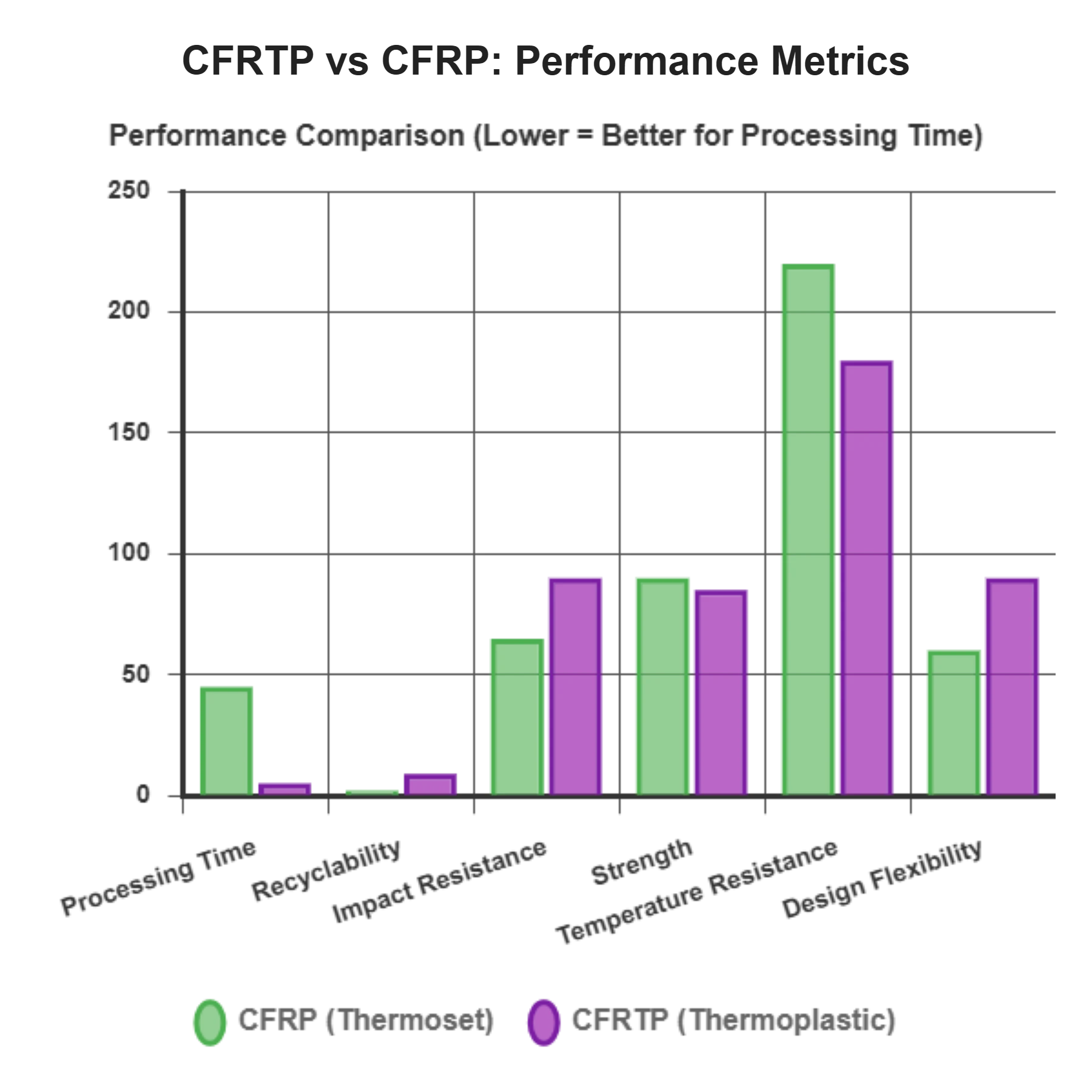
CFRTP VS. METALS
1. CFRTP exhibits the lowest density (1.50 g/cm³) among all compared materials, significantly outperforming traditional metals like steel (7.85 g/cm³) and copper (8.96 g/cm³), and even surpassing aluminum (2.70 g/cm³) and aluminum alloy (2.80 g/cm³). 2. In terms of strength-to-weight ratio, CFRTP demonstrates superior performance at 120 kN·m/kg, more than doubling the ratio of aluminum alloy (68 kN·m/kg) and far exceeding steel (26 kN·m/kg) and copper (14 kN·m/kg). 3. While steel shows the highest stiffness (200 GPa), CFRTP (150 GPa) outperforms aluminum (70 GPa), aluminum alloy (72 GPa), and copper (110 GPa), offering a favorable balance of rigidity and lightweight properties. 4. CFRTP achieves the highest corrosion resistance rating (9 on a 1-10 scale), surpassing all other materials including aluminum alloy (8), aluminum (7), copper (6), and steel (3), making it ideal for corrosive environments.

Frequently Asked Questions
Carbon (Xiamen) New Material Co., Ltd. aims to provide buyers with "one-stop" worry-free high-quality services. Here you can find all information about carbon fiber engineering plastics. If you still have questions, please send us an email for consultation!
-
How can I contact the manufacturer of a product that interests me?
When you find a product you are interested in, you can contact the manufacturer directly by sending an email and we will get back to you as soon as possible.
-
How do I find the products that interest me?
All you need to do is enter the keyword, product name in the search window and press the Enter key on your keyboard. Your search results page will then be displayed. You can also search within the product category pages on the home page. Each category is divided into subcategories, allowing you to refine your search and find products that interest you.
-
Where will I find a buying guide?
Please contact our after-sales service directly and we will provide you with a comprehensive operating guide.
-
What are CF Reinforced Thermoplastic Composites?
CF Reinforced Thermoplastic Composites are materials where carbon fibers are incorporated into a thermoplastic matrix. They combine the strength and stiffness of carbon fibers with the processability and recyclability of thermoplastics. For instance, they are used in automotive parts like bumper beams.
-
What are the benefits of CF Reinforced Thermoplastic Composites over traditional composites?
The key benefits include faster production cycles, easier recyclability, and better impact resistance. They also offer design flexibility. An example is in the manufacturing of consumer electronics casings where complex shapes can be achieved more easily.
-
How are CF Reinforced Thermoplastic Composites processed?
Common processing methods include injection molding, extrusion, and compression molding. Injection molding is widely used for mass production. For example, in the production of small components for the medical industry.
-
What industries use CF Reinforced Thermoplastic Composites?
They are utilized in aerospace, automotive, medical, and sports equipment industries. In aerospace, they can be found in interior components. In the medical field, they might be used in prosthetics.
-
How does the carbon fiber content affect the properties of the composites?
Higher carbon fiber content generally leads to increased strength and stiffness but may reduce ductility. A moderate content is often balanced for specific applications. For example, a higher content might be preferred in structural parts of a race car.
-
What are the challenges in using CF Reinforced Thermoplastic Composites?
Challenges include higher material costs, complex processing equipment requirements, and ensuring uniform fiber dispersion. Issues with adhesion between the fibers and the matrix can also arise. An example is in achieving consistent quality in large-scale production.







